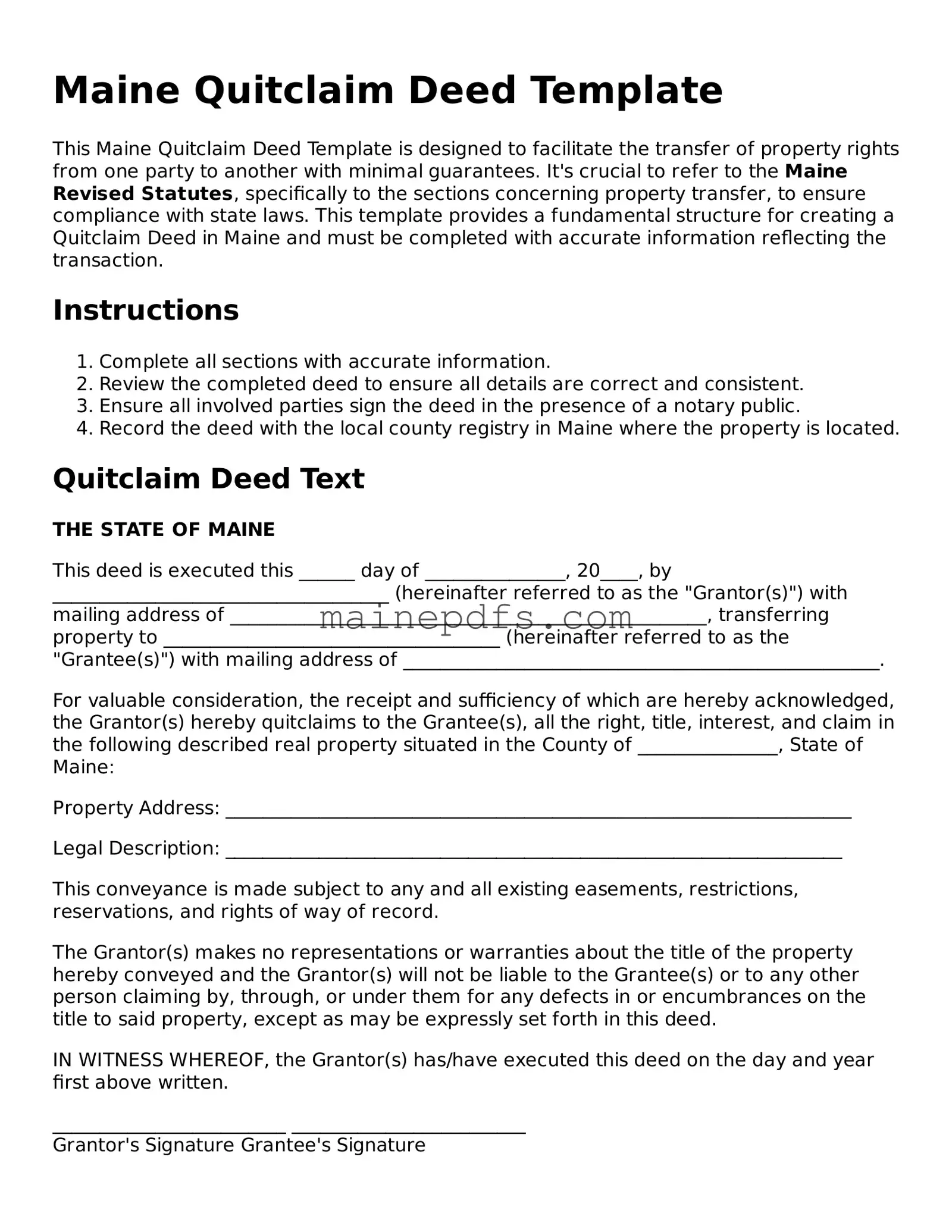Maine Quitclaim Deed Template
This Maine Quitclaim Deed Template is designed to facilitate the transfer of property rights from one party to another with minimal guarantees. It's crucial to refer to the Maine Revised Statutes, specifically to the sections concerning property transfer, to ensure compliance with state laws. This template provides a fundamental structure for creating a Quitclaim Deed in Maine and must be completed with accurate information reflecting the transaction.
Instructions
- Complete all sections with accurate information.
- Review the completed deed to ensure all details are correct and consistent.
- Ensure all involved parties sign the deed in the presence of a notary public.
- Record the deed with the local county registry in Maine where the property is located.
Quitclaim Deed Text
THE STATE OF MAINE
This deed is executed this ______ day of _______________, 20____, by ____________________________________ (hereinafter referred to as the "Grantor(s)") with mailing address of ___________________________________________________, transferring property to ____________________________________ (hereinafter referred to as the "Grantee(s)") with mailing address of ___________________________________________________.
For valuable consideration, the receipt and sufficiency of which are hereby acknowledged, the Grantor(s) hereby quitclaims to the Grantee(s), all the right, title, interest, and claim in the following described real property situated in the County of _______________, State of Maine:
Property Address: ___________________________________________________________________
Legal Description: __________________________________________________________________
This conveyance is made subject to any and all existing easements, restrictions, reservations, and rights of way of record.
The Grantor(s) makes no representations or warranties about the title of the property hereby conveyed and the Grantor(s) will not be liable to the Grantee(s) or to any other person claiming by, through, or under them for any defects in or encumbrances on the title to said property, except as may be expressly set forth in this deed.
IN WITNESS WHEREOF, the Grantor(s) has/have executed this deed on the day and year first above written.
_________________________ _________________________
Grantor's Signature Grantee's Signature
_________________________ _________________________
Grantor's Printed Name Grantee's Printed Name
State of Maine, County of _______________
On this ______ day of _______________, 20____, before me, a Notary Public in and for said state, personally appeared the above-named ____________________________________ known to me (or satisfactorily proven) to be the person(s) whose name(s) is/are subscribed to the within instrument and acknowledged that he/she/they executed the same for the purposes therein contained.
In witness whereof, I hereunto set my hand and official seal.
_________________________
Notary Public
My commission expires: _______________
